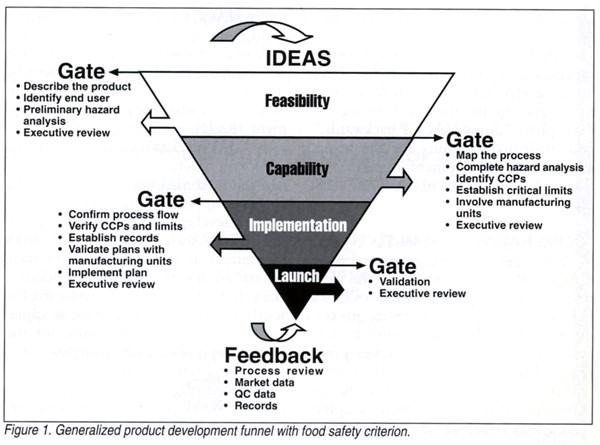Although planning for a recall during innovation sounds like planning for failure, despite the best laid plans, there is always a measure of uncertainty. A Harvard Business review of strategic approaches to product recalls so eloquently reminds us “...in the frenzy of a product launch, the last thing most managers think about is how to get a new product back if something goes wrong”
New, new, new!
Quoted in the Harvard Business review, Paul Ingrassia, the author of Crash Course (2010) wrote that one of the things that Toyota knew and yet forgot in the largest car recall in history was “never build...a new product in a new factory with a new workforce”. This should be a warning to all NPD departments in the food industry.
Calling the food safety team
Having to recall a new product for food safety requirements would be the ultimate embarrassment for any food company. New products always introduce a measure of the unknown and this means the potential for new hazards. It is understandable that ISO 22000 requires, in order to maintain the effectiveness of the food safety management system, the organization shall ensure that the food safety team is informed in a timely manner of changes to products, processes and new products (Clause 5.6.2, Internal communication). The food safety management system should then be updated for these new developments which includes reviewing the hazard analysis and the CCP’s and OPRP’s that are in place to ensure they will remain effective for new products.
In practice, however, the food safety team is often the last to know about the new product and, when they are informed, it is often too late. HACCP expert, Larry Keener suggest that the most effective method for HACCP development involves integrating food safety into the product development cycle. This avoids “implementing HACCP backwards”, as he calls it, after the product launch when the damage may already be done.
Build HACCP into your NPD procedure - the way to prevent a recall
Most food companies have an established product development process. Using the product development funnel approach as shown in fig 1, Keener suggest recommends that food safety requirements can be considered at each gate. The objective of this technique is to provide a systematic method for identifying, assessing and controlling hazards that may be associated with a new product or process, thus being proactive about food safety. Another major benefit of using this process is that it results in a more involved and informed management team. Consider having to advise the company’s CEO at the point of a new product launch that the product is unsafe. With food safety properly integrated into the product development process, this nightmarish scenario is easily avoided.

TIP: Put these steps into your NPD procedure today! Ensure your NPD form has a sign off to keep a record.
In conclusion, food safety should not be a brake for innovation but it is the last thing that should be sacrificed in the rush to remain competitive.
Reference and image courtesy of Food Safety Magazine. View more
Reference: View more




